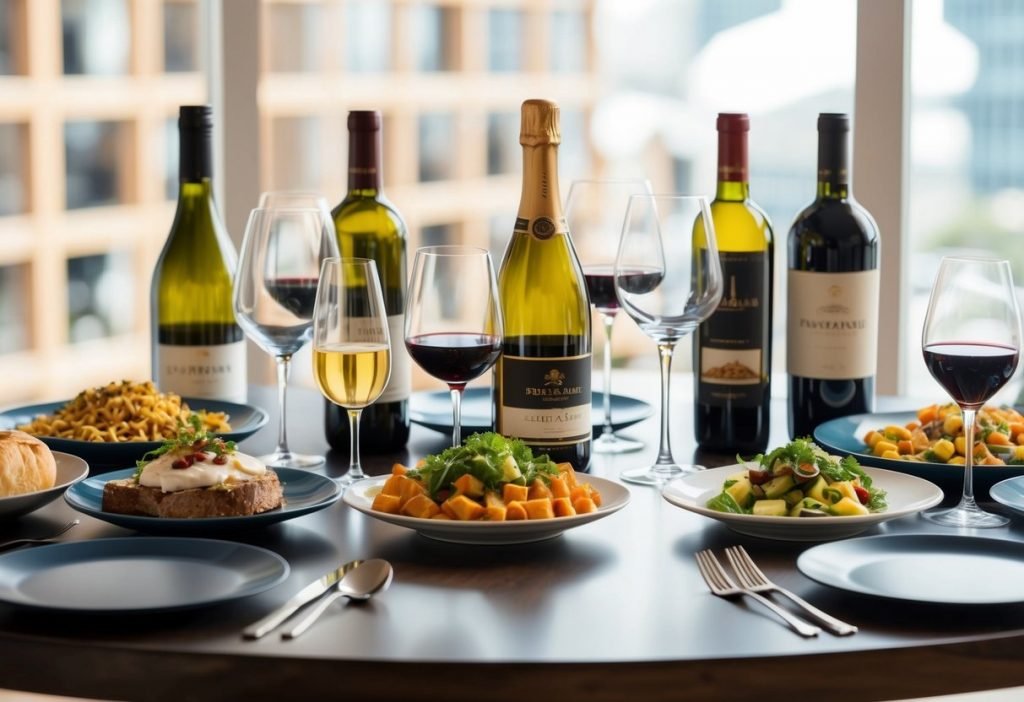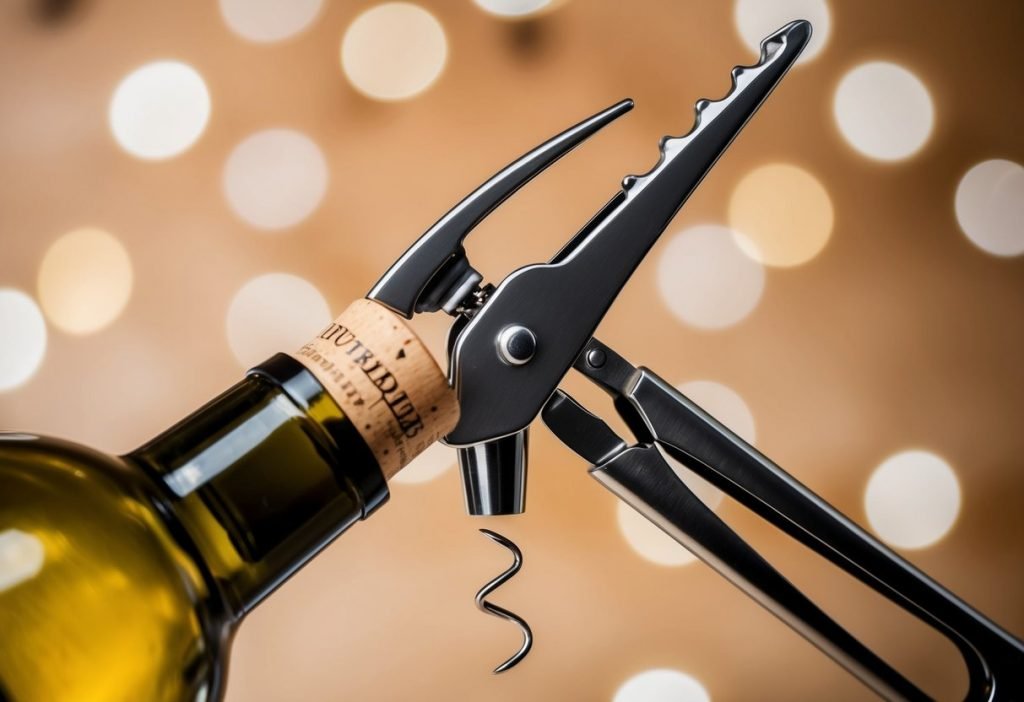Pairing wine with meals is both an art and a science that can elevate dining experiences. The key to successful wine pairing lies in balancing the flavors of the wine with the flavors of the food. Understanding the taste profiles of both the wine and the dish can lead to remarkable culinary moments.

While there are classic pairings—like red wine with beef or white wine with fish—there is more to consider than tradition alone. One must take into account factors such as acidity, sweetness, and intensity to find the perfect match. This approach opens up endless possibilities for exploration and enjoyment at the table.
Wine pairing also encourages experimentation. Individuals may discover new favorites by venturing beyond conventional wisdom. This journey of taste can enhance meals, making each dining experience unique and memorable.
Understanding Wine Fundamentals

Wine pairing begins with a foundational knowledge of wine itself. Key components such as varietals, tasting notes, and structure play a crucial role in how wines complement various dishes.
Wine Varietals
Wine varietals refer to the specific grape types used in making the wine. Common varietals include Cabernet Sauvignon, Chardonnay, and Pinot Noir. Each varietal brings distinct characteristics to the wine, influencing flavor, aroma, and body.
For example, Cabernet Sauvignon tends to have bold flavors with notes of blackcurrant and cedar, making it ideal for robust meats. In contrast, Chardonnay, especially when oaked, may exhibit creamy textures and flavors of vanilla and tropical fruits, pairing well with seafood and poultry. Understanding these varietals aids in selecting the right wine for a meal.
Tasting Notes and Aromas
Tasting notes encompass the flavors and scents detected when consuming wine. These notes often describe fruit, floral, earthy, and spicy characteristics.
Aromas might include elements like cherry, black pepper, or caramel, which can significantly influence food pairing. For instance, a wine with prominent cherry notes might enhance the flavors of a cherry-glazed duck. Recognizing how these flavors interact can elevate the dining experience and create complementary pairings that highlight both the food and wine.
Wine Body and Structure
The body of wine refers to its weight on the palate. Wines are typically categorized as light, medium, or full-bodied.
Light-bodied wines like Pinot Grigio are often crisp and refreshing, suitable for lighter dishes. On the other hand, full-bodied wines like Syrah have a richer texture that can stand up to heartier fare.
Structure involves acidity, tannins, and sweetness, all influencing how a wine feels and tastes. High acidity can cut through fatty foods, while tannins interact with protein, making these elements crucial in achieving effective pairings. Understanding these attributes leads to better choices when selecting wine for meals.
Pairing Principles
Understanding how to pair wine with food involves several key strategies that enhance the dining experience. These principles focus on finding harmony through complementary flavors, exploring contrasts, and matching intensity.
Complementary Pairings
Complementary pairings highlight similar flavors in wine and food, creating a harmonious balance. For instance, a rich, buttery Chardonnay pairs well with lobster in a creamy sauce. The wine’s similar texture and flavor profile enhance the dish.
When choosing complementary pairings, consider the dominant flavors in the meal. A robust Cabernet Sauvignon works well with grilled steak due to its tannins, which soften with the meat’s protein. Other classic pairings include Sauvignon Blanc with goat cheese and Pinot Noir with salmon.
A helpful tip is to match the weight of the wine with the weight of the food. Light wines suit lighter dishes, while full-bodied wines complement heartier meals.
Contrasting Pairings
Contrasting pairings create interest by balancing opposing flavors. This method surprises the palate and can elevate both the wine and the meal. A traditional example is a sweet Riesling matched with spicy Asian dishes. The sweetness quenches the heat, making each bite enjoyable.
When employing this approach, identify flavors that will counterbalance each other. A robust red wine like Zinfandel can effectively enhance the flavor of rich, spicy barbecue. This interplay creates a dynamic dining experience, highlighting both the food and wine.
It is crucial to consider acidity levels, as wines with higher acidity can cut through rich or fatty foods. This can create a refreshing contrast that enlivens the palate.
Pairing by Intensity
Pairing by intensity involves matching the strength of the wine with the boldness of the dish. Wines and meals should complement one another without one overpowering the other. For example, a full-bodied Shiraz pairs well with hearty stews, as their intensities align perfectly.
Light dishes such as salads or seafood are best matched with lighter wines like Pinot Grigio or Sauvignon Blanc. This keeps the meal balanced and enjoyable.
In practice, one can think of intensity in layers. Dark chocolate desserts, for instance, pair wonderfully with deep, sweet Port, allowing the flavors to enhance rather than compete. Understanding this relationship guides the selection of harmonious combinations.
Food Types and Wine Pairings
Different types of food pair well with specific wines, enhancing both the dish and the wine. Understanding these pairings can elevate the dining experience and help in selecting the perfect wine for any meal.
Red Meat and Robust Reds
Red meats, such as beef and lamb, typically pair well with robust red wines. Full-bodied options like Cabernet Sauvignon or Malbec have tannins that complement the protein and fat in red meats.
For optimal pairing, consider the preparation method. Grilled or roasted meats with charred flavors benefit from bold reds, while braised dishes might pair better with softer options like Merlot.
Key Pairings:
- Beef Steak: Cabernet Sauvignon
- Lamb Chops: Syrah/Shiraz
Poultry and Versatile Whites
Poultry dishes offer flexibility in wine pairing, allowing for a range of white wines. Chardonnay is a classic choice, especially for roasted chicken, as its rich texture complements buttery sauces.
For more subtle presentations, such as lemon-herb chicken, Sauvignon Blanc provides a refreshing contrast. Asian-inspired poultry dishes often pair nicely with Pinot Grigio due to its crispness and acidity.
Key Pairings:
- Roast Chicken: Chardonnay
- Grilled Chicken Salad: Sauvignon Blanc
Fish and Delicate Wines
Fish tends to require lighter, more delicate wines to enhance the meal without overpowering it. White wines, such as Pinot Grigio and Sauvignon Blanc, are excellent choices for most preparations.
Rich fish like salmon can pair well with light reds like Pinot Noir, balancing the robust flavors effectively. The key is to match the wine’s intensity with that of the fish preparation, whether it is grilled, baked, or fried.
Key Pairings:
- Grilled Salmon: Pinot Noir
- Baked Cod: Sauvignon Blanc
Vegetarian Dishes and Wines
Vegetarian meals present a diverse array of flavors, calling for similarly versatile wine choices. Earthy vegetables, like mushrooms or root vegetables, pair well with medium-bodied reds like Chianti.
Fresh salads with vinaigrette dressings often complement white wines like Sauvignon Blanc or dry Riesling, providing balance. Spicy vegetable dishes can also be enhanced with aromatic whites or light reds.
Key Pairings:
- Mushroom Risotto: Chianti
- Greek Salad: Sauvignon Blanc
Spicy Foods and Sweet Wines
Spicy dishes require a strategic wine selection to balance heat with sweetness. Off-dry Riesling and Gewürztraminer work well to cool the palate, offering a pleasant contrast to the spices.
For Asian cuisines, especially those with a kick, consider pairing with semi-sweet wines. The sweetness helps to temper the spice while allowing the flavors to shine.
Key Pairings:
- Thai Curry: Off-dry Riesling
- Spicy Szechuan: Gewürztraminer
Regional Pairing Suggestions
Wine pairing varies significantly across different regions, with local cuisines commonly influencing the choices. Understanding these regional preferences can enhance the dining experience by combining the right flavors.
European Classics
European wines often reflect their geographical origins, with distinct styles that complement traditional dishes. For instance, Italian Chianti pairs well with tomato-based pastas and grilled meats, thanks to its acidity and tannins.
In France, a classic Bordeaux fits beautifully with red meats and hearty stews. The wine’s structure balances the richness of the dish, enhancing the meal’s overall flavor.
Spain offers a unique pairing of Tempranillo with grilled vegetables and lamb dishes. Its earthy notes and fruitiness work harmoniously with the bold flavors typical of Spanish cuisine.
New World Innovations
New World wines bring a fresh perspective on pairing. In regions like California, Zinfandel’s fruit-forward profile complements barbecue ribs and spicy dishes. Its bold character stands up to rich flavors, creating a satisfying pairing.
Australian Shiraz, known for its peppery notes, pairs excellently with robust meats, such as smoked brisket or spiced sausages. This wine’s intensity matches the complexity of bold barbecued flavors.
New Zealand’s Sauvignon Blanc, often vibrant and zesty, is a perfect match for seafood. Its crisp acidity enhances dishes like grilled fish or shellfish, making for a refreshing combination.
Asian Cuisine and Wine Exploration
Asian cuisines present unique challenges and opportunities for wine pairing. For example, Riesling is a versatile choice, balancing the heat of dishes like Szechuan chicken or spicy Thai curries. Its sweetness helps tone down spiciness while complementing flavor profiles.
Sauvignon Blanc works well with sushi, particularly salmon and tuna. The wine’s bright acidity enhances the fresh flavors of the fish, creating a clean, harmonious experience.
Pinot Noir can complement Peking duck beautifully. The wine’s light body and red fruit flavors provide an elegant match to the dish’s richness, accentuating its savory notes.
Pairing Wine with Fusion Cuisine
Fusion cuisine blurs traditional pairings, making wine selection more creative. A popular choice is a Grenache, which works with a variety of dishes from different cuisines. Its fruity and spicy character pairs well with Thai tacos or Korean barbecue.
Chardonnay often suits dishes that blend flavors, like shrimp tacos with avocado. Its buttery texture enhances creamy elements while balancing the dish’s zest.
Finally, a bold Malbec pairs nicely with dishes that combine elements from different cultures, such as Moroccan spiced chicken. The wine’s depth complements the complex spices, offering a rewarding culinary experience.



